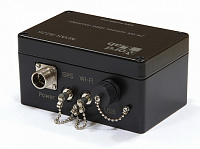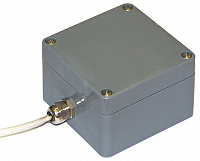The data loggers' product line was enriched with the products by NordLab LLC - a joint enterprise of R-sensors and MIPT. The new data loggers are named NDAS. They exploit the latest ARM architecture Texas Instruments' controller and a multichannel ADC by Analog Devices.
Low power consumption and wireless Wi-Fi interface for setup and signal quality control are but two distinctive features of NDAS. A GPS/Glonass combined receiver provides coordinates and clock synchronization.
The current product line is constituted by the 4-channel low-power autonomous data logger module
NDAS-8224 and the 6-channel multi-purpose data logger
NDAS-8226. The 12- and 48-channel versions are under development. The data loggers can be equipped by an accelerometer and a magnetic compass which allow determination of azimuthal orientation and tilt with respect to vertical direction as well as by temperature, pressure and humidity sensors for checking the working conditions and impermeability in case of a submerged deployment. All auxiliary information from sensors is available in telemetric transfer from the data logger as well as it is stored along with the registered signal.
The full compatibility with R-sensors' seismic sensors was of most importance during the development of the data loggers. A joint project of R-sensors and NordLab for the design of seismographs - seismic sensors with a data logger inside - is now being developed.


